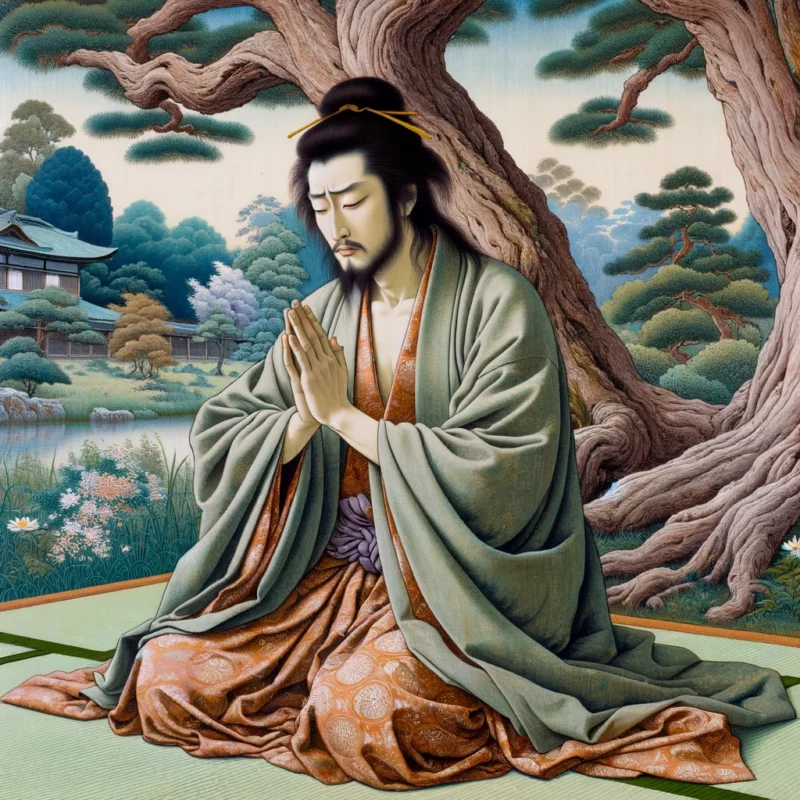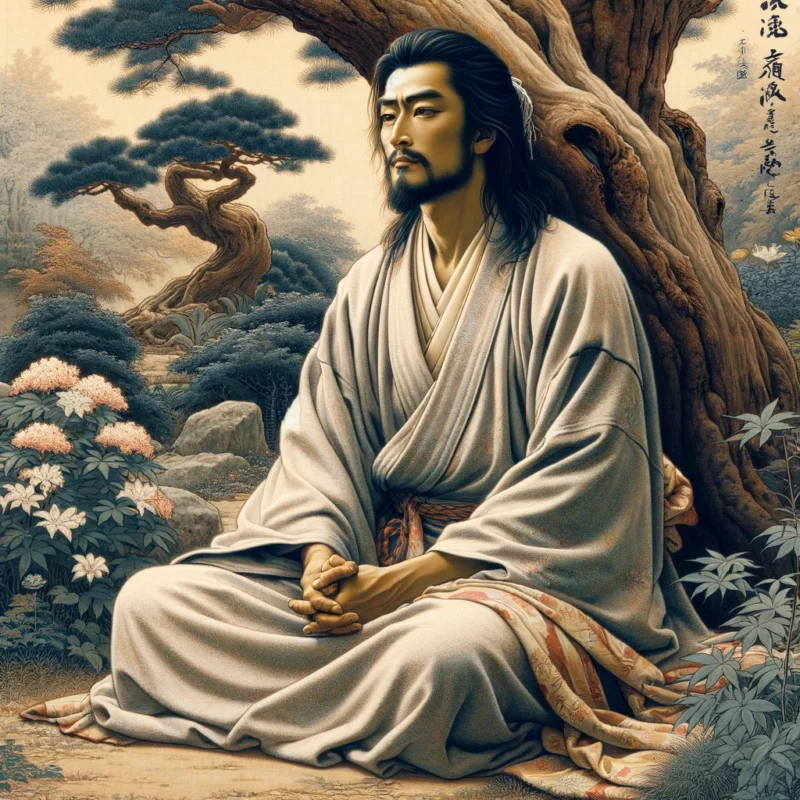

Depictions of Japanese Christ praying in Gethsemane
A Life of Jesus is an introduction to the life of Christ by renowned Catholic Japanese novelist Shusaku Endo, the author of Silence, a book set during the early persecutions of Christians in Japan. Much of Endo’s work revolves around the tensions of being a Catholic in a very non-Christian country, and this book was written as a guide to the life of Christ specifically for people with a Japanese religious disposition who are less receptive to harsh, jealous, father-figure Gods.
(Fun fact, when I watched the Martin Scorsese movie version of Silence, very highly recommended, at the International Cinema at BYU, we were treated to a lecture by Endo’s translator, a BYU professor of Japanese who consulted on the film. This same professor, who was one of the most renowned English/Japanese translators, and received an honor from the Emperor for his work, was called as a Mission President–to Oregon. Sometimes our ways are not His ways).
This book fits in that rare gem-of-a-genre I discussed in my earlier post on Jesus the Christ of a devotional work that is nonetheless scholarly. It also fits in the tradition of re-telling the story of Christ from a fresh perspective (other excellent examples of this include a section in Unapologetic: Why, Despite Everything, Christianity Can Still Make Surprising Emotional Sense and The Five Books of Jesus by our own James Goldberg; however, perhaps the most famous example of this in The Master and Margarita did not do it for me).
Perhaps because of the eastern religious waters he swam in, Endo didn’t seem at all nervous about employing the historical critical method and being open to major swathes of the NT not being historical while not having it affect his very real religious faith in Christ and the atonement. For example, he’s very open to Jesus not having been born in Bethlehem. (Incidentally, I am too. When the Book of Mormon places Christ’s birth at Jerusalem, the standard response is that Bethlehem is part of the Jerusalem environs, but what if the Book of Mormon is actually just right and the Bible is just wrong? However, I am also very open to all the standard, traditional things happening, and recognize that to some extent it does not matter much). This book is far from a kithschy, sound-bitey version of the gospels that we often get in devotional literature. Devotional treatments are often more superficial, but on the other hand deeper, more intellectually sophisticated treatments often expurgate the very spiritual elements that make Christ Christ.
It is clear that Endo had spent a long time deeply, almost viscerally meditating on and studying the text itself, shorn of cultural misconceptions and assumptions about the life of Christ (the most famous perhaps being the wise men at the birth, but there are others). I’m ashamed to admit I have not yet read the New Testament with that kind of intense scene-by-scene, internal character-by-internal character introspection yet. We American Latter-day Saints have a thousand little images about how things went down during the Savior’s life in our subconscious because of our the motifs in our art and sermons we were raised with (I can’t remember a time when I didn’t know that Jesus was born in a manger), and seeing the life of Christ afresh from a Japanese perspective, from a cultural context where every winter does not include manger scenes with the aforementioned inaccuracies, allowed me to see the life of the Savior with new, but still faithful, eyes–not a small feat. Like missing obvious typos when you’ve read a paper a thousand times and need fresh eyes on it, getting a new perspective on the life of the Savior is genuinely difficult when every reading is done through the lens of a host of assumptions we’re often not even consciously aware of.
For example, despite having read the gospels multiple times, I didn’t realize until this book that, right before his denial of Christ, Peter was accompanied by a mysterious disciple who personally knew Caiaphas (maybe Nicodemus?), and was therefore able to enter Caiaphas’ palace (or mansion, as Endo calls it) during the trial of Jesus. Endo speculates that this disciple who was there at the trial by dint of his personal connection to Caiaphas was advocating for the disciples separately from Christ, in a sense using Christ as the literal scapegoat for the disciples so that they could go free. This may or may not be true, but again the point is that I had somehow glossed over the mysterious and potentially important detail that at least one of the disciples personally knew Caiaphas well enough that he was able to get Peter into the courtyard.
Again, it’s not necessarily that the facts are different (although he does provide some interesting speculation–maybe Christ did interact with the Essenes during his temptations in the wilderness, they were probably close by after all), but rather the emphases. We gloss over the episode when Christ lost his crowds of followers and was being hunted by the authorities enough to make him avoid certain places, but those seem like pretty major things to gloss over.
Reading Endo’s own speculations about the internal motivations opened up a number of possibilities I hadn’t considered before. Sometimes his speculations enter C.S. Lewis territory, when it’s almost as if he’s speaking from personal revelatory discernment about the Savior. That’s not to say that I’m holding his particular takes or descriptions as scripture of course, but I am open to the possibility that some of that genre of exegesis can be informed by authentic revelation, and if that kind of revealed wisdom is going to come to somebody it would be to somebody like Endo who has put the “energy of heart” into his devotional study of the Savior’s life.

Comments
One response to “Latter-day Saint Book Review: A Life of Jesus, by Shusaku Endo”
Thank you for sharing this, and thx for the almost-reverent tone in your analysis of the book. Much appreciated.